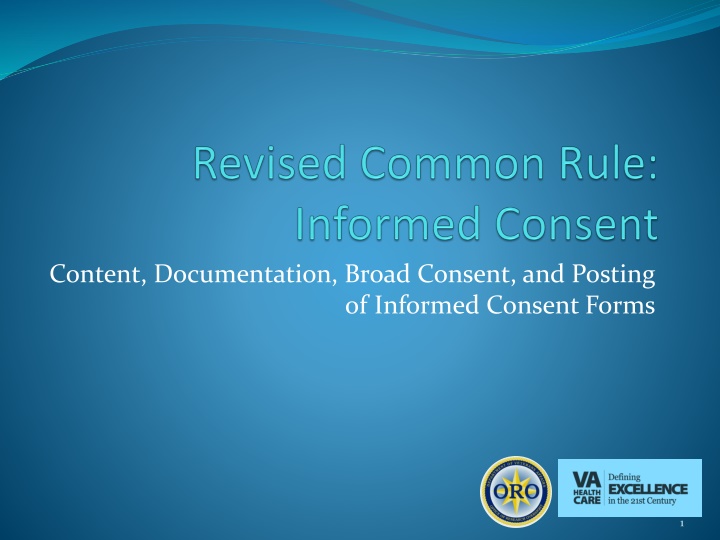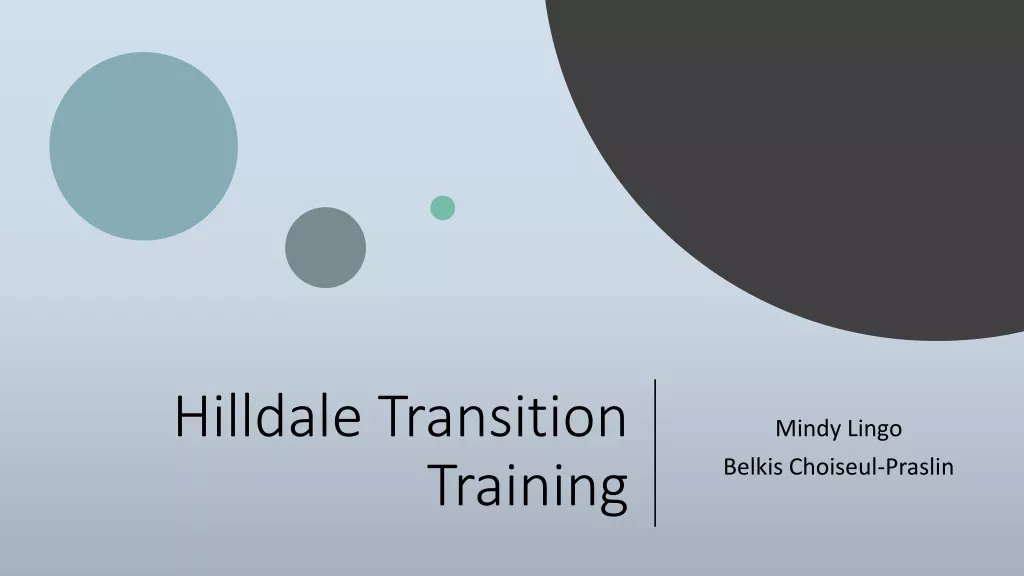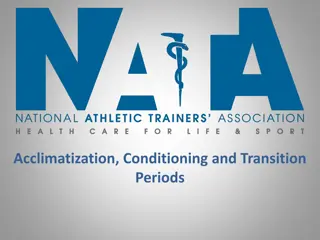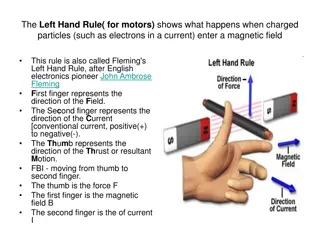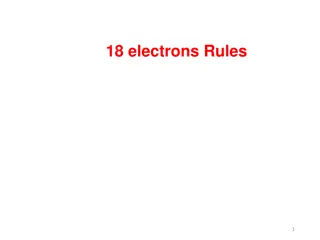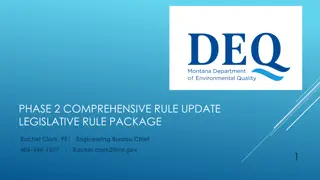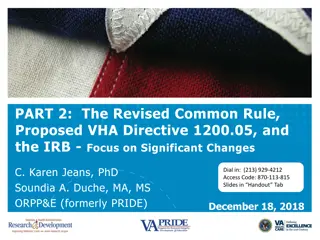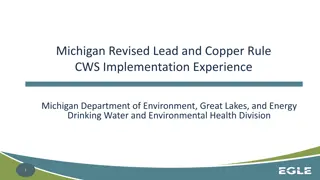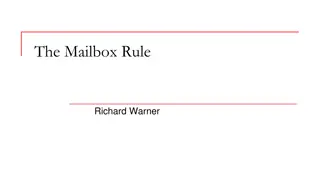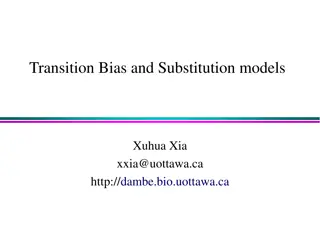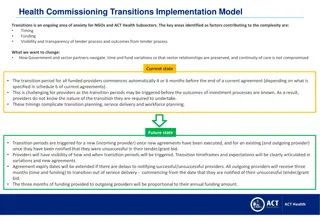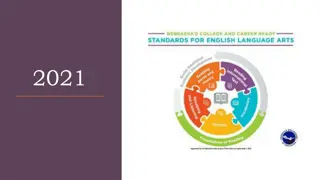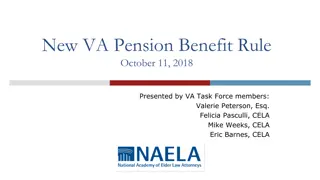Overview of Revised Common Rule and Transition Periods
Revised Final Rule, published in January 2017, aims to modernize oversight in human subjects research. The transition period from July 2018 to January 2019 allows for institutions to utilize certain burden-reducing provisions. Studies approved post-January 21, 2019, must adhere to the 2018 Requirements.
Download Presentation

Please find below an Image/Link to download the presentation.
The content on the website is provided AS IS for your information and personal use only. It may not be sold, licensed, or shared on other websites without obtaining consent from the author.If you encounter any issues during the download, it is possible that the publisher has removed the file from their server.
You are allowed to download the files provided on this website for personal or commercial use, subject to the condition that they are used lawfully. All files are the property of their respective owners.
The content on the website is provided AS IS for your information and personal use only. It may not be sold, licensed, or shared on other websites without obtaining consent from the author.
E N D
Presentation Transcript
Content, Documentation, Broad Consent, and Posting of Informed Consent Forms 1
Overview Introduction Major changes to informed consent content and process Broad consent Waiver of Alteration of Informed Consent Screening, recruiting and determining eligibility Posting of informed consent documents Documentation of Consent Change to definition of Legally Authorized Representative (LAR) 2
Revised Final Rule Final Rule to revise the current regulations at 45 CFR 46, Subpart A (Common Rule) was published by HHS on 19 January 2017 in the Federal Register. Revisions are intended to modernize, strengthen, and make more effective the current system of oversight under the Federal Policy for the Protection of Human Subjects that has been the federal Common Rule since 1991. Delay of general compliance date to January 21, 2019 4
Transition: Key Dates and Time Periods July 19, 2018: Effective date for the 2018 Requirements. July 19, 2018 through January 20, 2019: Time period when institutions may take advantage of the three-burden reducing provisions of the 2018 Requirements (for research that is transitioned) VA research may only apply two of those provisions during this period. This period referred to as the delay period January 21, 2019: General compliance date for the 2018 Requirements. Also, the date when the 2018 Requirements must be implemented in their entirety. January 20, 2020: Compliance date for the cooperative research provision. 5
Question A new study is approved by the IRB January 21, 2019. Which regulations may they follow? Pre-2018 (current) rule Pre-2018 rule plus the 3 burden-reducing provisions 2018 (revised) rule Either the pre-2018 rule or the 2018 rule 6
Answer Studies approved by the IRB on or after January 21, 2019 must follow all the requirements in the 2018 final rule (the revised Common Rule). 7
38 CFR 16.116 and 16.117 In the discussion of 16.116, the Final Rule s preamble combines explanations about the requirements for consent (the process) with the requirements for consent forms. It is important to remember that, in regulations themselves, 16.117 contains the requirements for forms, while 61.116 still pertains to the consent process and the informational substance contained therein. 16.116 Requirements for Consent Process 16.117 Requirements for Consent Documentatio n 8
Easier to Reference Requirements In 16.116, the unnumbered list of conditions appearing in the pre-2018 introduction before the numbered Basic Elements of Consent includes multiple independent and important regulatory requirements. In the 2018 Final Rule, these requirements have been separated and the previous conditions have been numbered as 16.116(a)(1-3) and (6), and two new conditions have been added. The separation and numbering is intended to make it easier to reference these requirements. 9
Updates to 16.116 General conditions for consent are now numbered, new addition of reasonable person standard, and key information requirement for informed consent presentation 16.116(a) New additional requirement to basic elements of informed consent if research involves collection of identifiable private information or identifiable biospecimens 16.116(b) Contains three new additional elements ( when appropriate ) 16.116(c) 16.116(d) New broad consent section 10
FDA Harmonization FDA plans to update its regulatory language. The 21st Century Cures Act (2016) requires the Secretary of HHS to harmonize the differences between 45 CFR 46, Subpart A, and the U.S. Food and Drug Administration (FDA) human subject regulations. Expectation is that FDA will issue its own NPRM for 21 CFR 50 and 56 and eventually a Final Rule. Different requirements for waivers, consent process, and consent form language. Institutions, IRBs, and investigators must comply with FDA and VA regulations (pre-2018 or 2018 version as applicable) when both apply. 11
Promoting Autonomy Changes are intended to make informed consent more meaningful so that research subjects will have the necessary information to make informed decisions 13
General Improvements The revised Common Rule explicitly establishes a new standard: to provide the information that a reasonable person would want to have in order to make an informed decision about whether to participate _.116(a)(4) 14
General Improvements Information presented in sufficient detail, and organized and presented in a way that facilitates subject s understanding of reasons why one might or might not want to participate Not merely provide lists of isolated facts _.116(a)(5)(ii) 15
General Improvements The revised Common Rule has a new requirement that certain key information must be provided first _.116(a)(5)(i) 16
Concise and Focused: Key Information This first section must provide a concise and focused presentation of key information regarding why one might or might not want to participate Must be organized and presented in a way that facilitates comprehension. _.116(a)(5)(i) 17
Key Information (contd) In general, we expect that this section of the consent would include a concise explanation of the following: The fact that consent is being sought for research and that participation is voluntary The purposes of the research, the expected duration of the subject s participation The reasonably foreseeable risks or discomforts The benefits to subjects or others that may be reasonably expected Appropriate alternative procedures or courses of treatment, if any that might be advantageous 18
Basic Elements of Informed Consent One new element: Notice about possible future research use of information or biospecimens stripped of identifiers: Notifying prospective subject that subjects information or biospecimens could be used for future research without additional consent; or Notifying prospective subject that subjects information or biospecimens will not be used for future research. _.116(b)(9) 19
Question The new element of informed consent about possible future research use of information or biospecimens stripped of identifiers is required in all informed consent documents. True or False? 20
Answer True. This is a basic element of informed consent that must be present in all ICDs unless the element is appropriately altered by the IRB. 21
Additional Elements of Informed Consent Three new additional elements: Notice about whether clinically relevant research results, including individual research results will be given to subjects, and if so, under what conditions Notice about possible commercial profit, and whether subject will share in this profit (for research involving biospecimens) Notice about whether research might include whole genome sequencing (for research involving biospecimens) _.116(c)(7)-(9) 22
Genesis of Broad Consent The NPRM proposed to revise the definition of human subject to include research in which an investigator obtains, uses, studies, or analyzes biospecimens, regardless of identifiability. The NPRM also proposed to allow broad consent to cover the storage or maintenance for secondary research use of all biospecimens (regardless of identifiability) and identifiable private information that were originally collected for either research studies other than the proposed research or nonresearch purposes. 24
Revised Final Rule: Definition of Human Subject The proposal regarding revising the definition of human subject to include biospecimens regardless of identifiability was commented on by almost 50 percent of the commenters, 80 percent were opposed to it for a variety of reasons, including concerns about broad consent. Wording of the Definition of Human Subject has changed from the current rule but primarily for clarification only; does not include all biospecimens regardless of identifiability. 25
What is Secondary Research? Research use of information or biospecimens collected for either research studies other than the proposed research, or for nonresearch purposes (e.g., clinical care, public health, education) 26
New Flexibility for Secondary Research Investigators will still have the option of doing secondary research as they do under the current rule: Nonidentifiable biospecimens/data (not HSR, no consent) Coded biospecimens/data (not HSR, no consent) Identifiable biospecimens/data (with waiver of informed consent or study-specific consent) The new broad consent provisions are essentially a new alternative to these other options 27
Allowing the Use of Broad Consent for Secondary Research Optional: An alternative to traditional informed consent or waiver of informed consent Applicable to: The storage, maintenance, and secondary research use of identifiable private information or identifiable biospecimens Collected for either a different research study, or for non-research purposes Creates future regulatory flexibilities 28
Broad Consent for Secondary Research Required descriptions specific for broad consent: The types of research that may be done, with sufficient information that a reasonable person would expect the consent would allow The identifiable materials that might be used Whether there might be sharing, and With what types of institutions or researchers The period of time the materials may be stored, maintained, or used for research _.116(d)(2)-(4) 29
Caveats with Broad Consent Use If a broad consent is used, IRB may not omit or alter any of the requirements described in _.116(d) If an individual was asked to provide broad consent and refused to consent, an IRB cannot waive consent Importantly, under the final rule, broad consent is permissible only for secondary research and no other types of research. _.116(e)& (f) 30
Question You can use broad consent for research that involves drawing subjects blood. True or False? 31
Answer False. Broad consent is permissible only for secondary research and no other types of research. 32
The Exemption for Storage and Maintenance of Identifiable Information or Identifiable Biospecimens for Secondary Research with Broad Consent ( _.104(d)(7)) Broad Consent as provided in _.116(d) Limited IRB review of the broad consent process and form Limited IRB review of the privacy and confidentiality considerations if there are changes to the storage and maintenance. 33
The Exemption for Secondary Research Use of Identifiable Information or Biospecimens with Broad Consent ( _.104(d)(8)) Limited IRB review of whether the research falls under the Broad Consent Documentation or waiver of documentation of consent provisions occurred Limited IRB review of the privacy and confidentiality safeguards The investigator does not include returning individual research results to subjects as part of the study plan except when required by law 34
Waiver or Alteration of Consent for public benefit and service programs Final Rule revised the provision for waiver or alteration of consent in research involving public benefit and service programs conducted by or subject to the approval of state or local officials. _.116(e) 36
General Waiver or Alteration of Consent Four existing waiver conditions are included unchanged in 16.116(f)(3). Additional criterion was added for research that involves accessing or using private information or identifiable biospecimens. This new requirement is that the research could not practicably be carried out without accessing or using such information or biospecimens in an identifiable format. Non-identified information should be used whenever possible to respect subjects interests in protecting the confidentiality of their information and biospecimens. _.116(f) 37
Question The new fifth criterion for waiver of informed consent (that the research could not practicably be carried out without accessing or using identifiers) is required for all research, including research that does not collect identifiable data. True or False? 38
Answer False. Additional criterion is only required for research that involves accessing or using private information or identifiable biospecimens. 39
General Waiver or Alteration of Consent-Broad Consent IRB cannot waive informed consent under broad consent, or omit or alter any of the required broad consent elements. If an individual was asked to provide broad consent and refused to consent, the IRB cannot waive consent. _.116(f) 40
General Waiver or Alteration of Consent (cont d) Unlike complete waivers at 16.116(f)(1), for alterations at 16.116(f)(2) an IRB may not omit or alter any of the general requirements (conditions) in 46.116(a) including the new format requirements in 16.116(a)(5). General waiver applies to: 16.116(a) - General requirements of informed consent 16.116(b) - Basic elements of informed consent 16.116(c) - Additional Elements of Informed Consent _.116(f) 41
Screening, Recruiting, or Determining Eligibility (1) New addition that addresses issues regarding waivers of informed consent to obtain information or biospecimens for screening, recruiting (contacting), or determining the eligibility of prospective subjects. The previous requirement for IRBs to waive informed consent was viewed as burdensome and unnecessary for protecting subjects, and is not consistent with FDA regulations. _.116(g) 43
Screening, Recruiting, or Determining Eligibility Now in 16.116(g), one of two conditions must be met for this exception: The information will be obtained by communicating with the prospective subject. The information will be obtained by accessing records or stored biospecimens. This is not a waiver of the consent requirement but rather an exception to the requirement. _.116(g) 44
Question The IRB does not need to waive informed consent for research activities involving recruiting and screening without obtaining informed consent. True or False? 45
Answer True. This is not a waiver of the consent requirement but rather an exception to the requirement. 46
Posting of Clinical Trial Consent Forms New requirements for posting clinical trial consent forms on a publicly available federal website that will be established as a repository for clinical trial consent forms. The Final Rule s preamble states ClinicalTrials.gov might be an appropriate choice as the website the fact that these trials already have a record in the database will mean that the burden of submission of the informed consent document will be substantially lower. Consent forms must meet the requirements of 16.116 The Final Rule s preamble specifically states that posted consent forms will need to comply with the requirement in 16.116 (a)(5), such that a concise presentation of key information is at the beginning of consent forms. _.116(h) 48
Posting of Clinical Trial Consent Forms, cont. The responsibility for posting is on the awardee or the federal department or agency conducting the study. The posting can take place any time after the trial is closed to recruitment, so long as the posting is no later than 60 days after the last study visit by any subject (as required by the protocol). The redaction of proprietary or institutionally sensitive information of portions of consent forms is allowed. 49
Posting of Clinical Trial Consent Forms, cont. Only one IRB-approved version (not necessarily the final) of the consent form for each clinical trial must be posted on the federal website after the clinical trial is closed to recruitment. In accord with the new single IRB review requirement, only one posting is required for each multi-institution study. There is no expectation that a version would need to be posted for each study site nor even for each class of subjects in the study (e.g.,both for adults and for children). 50
